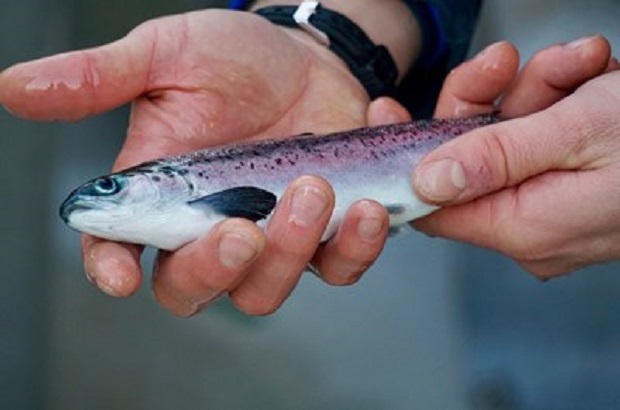
News
Industry update
Sustainability
Scottish Sea Farms release double-sized smolts from RAS hatchery
December 11, 2019 By Nestor Arellano

Scottish Sea Farms reported that it has shipped out the first batch of smolt from its recirculating aquaculture system (RAS) hatchery in the town of Barcaldine in Scotland.
The smolts, which were transferred to sea pens, had an average weight of 160 grams – more than double that of smolts grown by the company when using traditional hatchery methods, according to a press release from Scottish Sea Farms.
The smolts arrived at the company’s hatcher as eggs back in January of this year.
“This is a major milestone for all of the team, not just at Barcaldine but across the company,” said Pål Tangvik, freshwater manager at Scottish Sea Farms.
He explained that the RAS hatchery provided the company with greater control over key factors such as water quality, oxygen levels, temperature, light, and the speed of flow.
“The result is bigger, more robust smolts that will be better able to withstand the natural challenges of the marine environment,” said Tangvik. “We will also be able to shorten the time these salmon will spend at sea by up to two months which will reduce their exposure to these challenges and increase survival rates, and have longer fallow periods between crops which will contribute towards a safer environment for subsequent generations of fish.”
RAS technology also allows the company “to control with pinpoint accuracy when the salmon are ready to go to sea,” said Jim Gallagher, managing director of Scottish Sea Farms.
The RAS hatchery is located on the shores of Loch Creran. This allows the young salmon to be transferred directly from the hatchery to a boat which will take it to the company’s fish farm in Shetland.
The facility in Barcaldine took two years and costs roughly US$72.2 million to build. It is set to officially open in 2020. The facility includes four incubator units and four hatcheries and was designed to be environmentally friendly.
Noelia Rodriguez, operations manager at the Barcaldine hatchery, said the facility is able to use less fresh water compared to other hatcheries.
“Incoming water is filtered to remove any particles then disinfected using UV light and circulated to anywhere in the hatchery, where it is maintained at a constant temperature of between 12-14 degrees, before being cleaned again and recirculated every 20-30 minutes,” he said. “Combined, this uses 98 per cent less freshwater and significantly less energy compared with heating and cooling water at traditional hatcheries.”
The building also uses a biomass energy system for heating and hot water. Rodriguez said the system is known to “deliver the biggest CO2 savings of any renewable heat source.”
Print this page